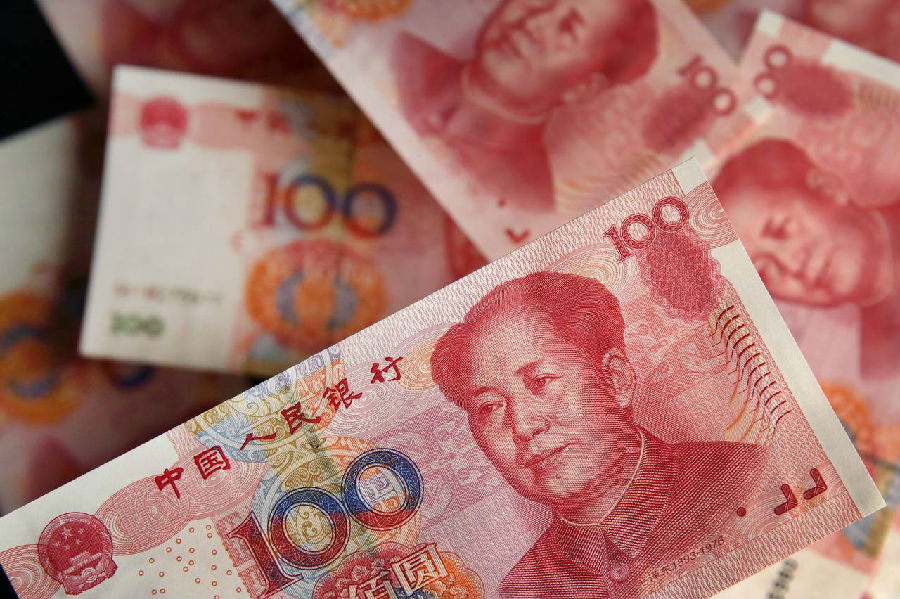Yuan Picks Up Pace as Global Currency
2015-10-7

The recent rocky ride for China’s markets has helped the country’s currency take another step toward a bigger global presence.
In August, for the first time, the yuan moved ahead of Japan’s yen for fourth place in a league table of the most-used currencies for cross-border payments compiled by Swift, the international payments provider.
A “substantial” increase in usage of the currency in the final week of August was triggered by market volatility caused by concerns about the Chinese economy and Beijing’s devaluation of the yuan, Swift said in a report.
To be sure, the yuan remains a small player on the global stage—it was used in 2.8% of global payments in August, compared with 44.8% for the dollar, 27.2% for the euro and 8.5% for the British pound.
But the Chinese currency has been gaining traction. As recently as August 2012, the yuan was ranked No. 12 on Swift’s list with just a fraction of its current share of the global payments market.
Astrid Thorsen, head of business intelligence solutions at Swift, said volatile Chinese markets spurred greater use of the Chinese currency, especially toward the end of August.
China’s yuan recorded its biggest one-day loss in two decades in August after the country’s central bank surprised markets by devaluing the currency. The yuan had been strengthening for about a decade before the move, which Beijing said was meant to help shift the currency toward a more market-driven model.
The devaluation was also viewed by many investors as a sign of growing concern among Chinese authorities about the state of the country’s economy, helping to fuel fears of a slowdown.
The volume of foreign exchange trades in yuan hit more than 1 million for the first time in a single month in August, rising 50% from the same period last year and up 20% from July, “likely due to the devaluation…by the People’s Bank of China,” the Swift report said.
Chinese officials have actively sought a greater role for the yuan on the global stage, and Beijing has urged the IMF to declare the yuan an official reserve currency alongside the dollar, euro, pound and yen.
More than 1,000 banks in 100 countries can now use the yuan for payments with China and Hong Kong, about 20% more than two years ago. And though about 70% of yuan payments are processed through Hong Kong, more than a dozen other clearing centers have also recently sprung up in cities around the world, including in Kuala Lumpur, Sydney and Bangkok.
China has also agreed to swap agreements with dozens of central banks, including the Bank of England and the European Central Bank.
Several banks and financial centers are vying to be a hub for trading in the Chinese currency.
“Trading [in yuan] was almost nonexistent five years ago but today ranks amongst the most traded currencies globally,” said Chris Knight, head of electronic trading for Asia at Standard Chartered Bank.
“Given China’s role as a regional and global business hub at the center of economics and commerce, it has become critical for us to trade [it].”
Source: The Wall Street Journal



